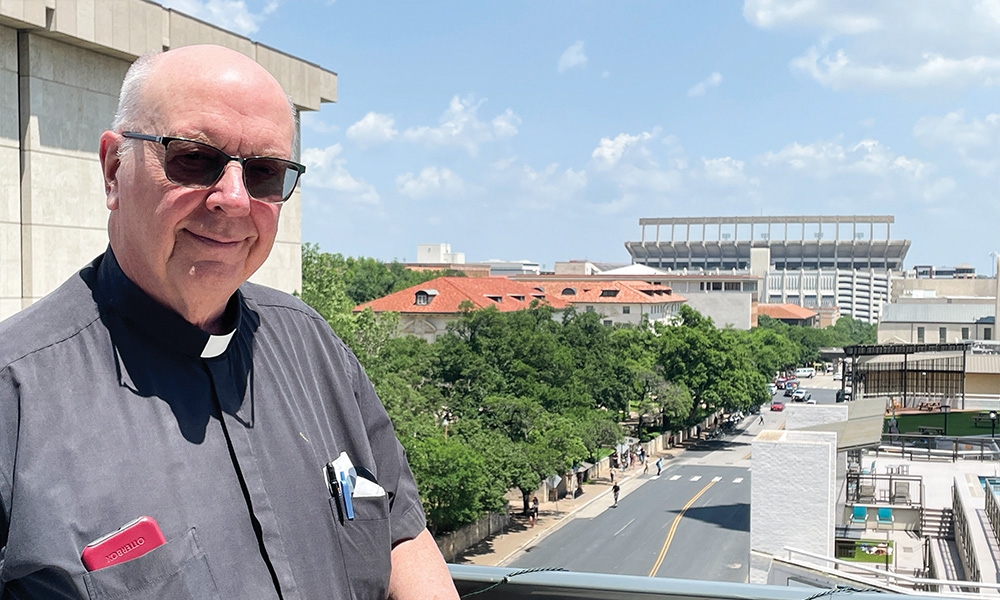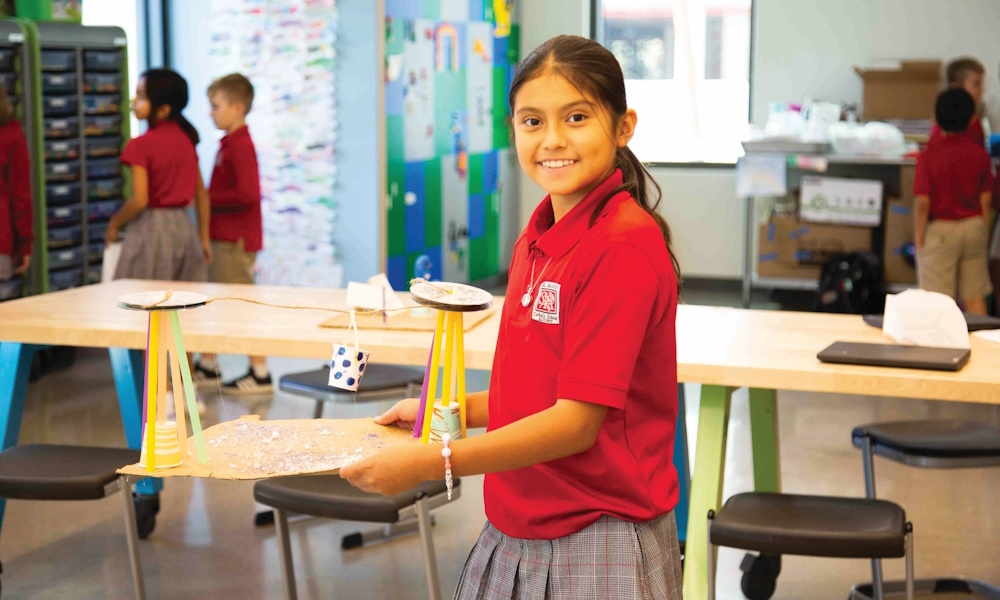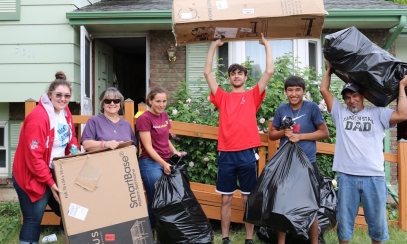
St. Austin Parish reaches for the heavens
St. Augustine of Canterbury, colloquially known as St. Austin, once said, “Pray as though everything depended on God. Work as though everything depended on you.” Perhaps these words echoed in the minds of parishioners at St. Austin Parish in Austin eight years ago as they undertook a multi-million-dollar project to build a new school and parish facilities.
St. Augustine of Canterbury, colloquially known as St. Austin, once said, “Pray as though everything depended on God. Work as though everything depended on you.” Perhaps these words echoed in the minds of parishioners at St. Austin Parish in Austin eight years ago as they undertook a multi-million-dollar project to build a new school and parish facilities.
In 1905, Pope Pius X issued Acerbo Nimis, an encyclical on teaching Christian doctrine to students in universities, colleges and secondary schools. Three years later, inspired by the pope’s words, Paulist Fathers came from New York City to establish St. Austin Parish on Guadalupe Street across from the University of Texas. Then, in 1915, Dominican Sisters organized a school called Holy Rosary to share the intellectual wealth of the Catholic Church with public school students in Austin’s central city. By 1941, the school, which included eight grades, was relocated next to and renamed St. Austin.
Through 100 years, the parish and school continued to grow in numbers but found itself hemmed into a small space by a growing metropolis. To continue their long-running and thriving work, in 2016 parishioners heard a call to grow their mission upward — toward heaven. The result is a six-story building that houses parish offices and the school.
The first-floor houses receptionists and meeting rooms for the parish and the school. Primary school classrooms occupy the second floor, while the third floor houses sixth, seventh, and eighth-grade classrooms as well as a library, art studio, podcast studio, a couple of Robo 3D printers, and other innovative features. The fourth floor is empty but will be used to expand two classes per grade. The fifth floor houses parish ministries, and the sixth has a basketball court.
Paulist Father Charles R. Kullmann, who has served as pastor of the parish since 2010, has much experience in urban parishes in New York City and San Francisco and dealing with cosmopolitan building issues. He credits “two dynamic parishioners, Christopher Kennedy and Patricia “Trish” Dolese,” for encouraging their fellow parishioners to embrace a novel idea Kennedy proposed to maximize the parish’s space. Kennedy recommended razing everything except the church and rebuilding the school and parish facilities from scratch on half of a two-acre tract of land the church owned. The parish would then lease the other half to a developer for 99 years and use the rent to pay for most of the new parish and school structure.
To finance the $44 million cost for the new school and ministry building, St. Austin leased a remaining acre adjacent to the school and parish to a third-party developer who built a 29-story structure with 423 apartments to house UT students. St. Austin financed the construction of its new facilities with cash from one upfront ground lease payment, a $30 million tax-exempt bank loan, and $9 million of taxable bonds purchased by the Diocese of Austin. The project will provide the parish and diocese a revenue stream for nearly 100 years.
“We had a lot of sweat equity involved,” Father Kullman said. “Lots and lots of parishioners helped tremendously.”
Parishioners packed up and moved the school to classrooms that previously housed San Juan Diego Catholic High School, which had relocated to new facilities in 2017. Parishioners transferred church offices to space in the parish’s parking garage, packed the rest of the rectory, and reestablished it in a rental house.
“Everybody in the parish helped an awful lot in moving the rectory in exile, as I like to call it,” Father Kullman said. “One of the main things I was very concerned about was that we did not want the building project to tear the parish part. Mr. Kennedy and Trish Dolese were very helpful in frequently communicating with parishioners. We also established a Good Shepherd committee to pray for the parish so that people wouldn’t get torn apart by it.”
The parish also hired professionals such as an attorney and project manager. Moreover, they received “exceptional support” from the diocese, especially from Bishop Joe Vásquez; Deacon Ron Walker, the diocesan chancellor; and Mary Beth Koenig, the diocesan chief financial officer.
St. Austin will hold a grand opening of the project redevelopment on Aug. 8-9. Visit www.staustin.org for more information.
Alfredo E. Cárdenas began as a freelance writer for the Catholic Spirit in 2000, writing histories of parishes. In 2010, he was named editor of the South Texas Catholic, a publication of the Corpus Christi Diocese. Upon his retirement in 2017, he returned to Austin, where he resumed writing for the Catholic Spirit.





